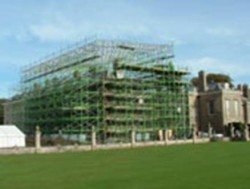Offsite construction methods are increasingly being used in all sectors of the UK, providing excellent business opportunities.
This is the view of Ian Pannell from Build Offsite, a company which has been advocating the intelligent use of offsite methods for almost 13 years. Ian argues that this view is increasingly being seen in the market and provides his thoughts on the use of offsite construction methods.
The shift towards the use of offsite methods to deliver buildings and civil engineering structures is not new; it has been underway for decades, led by highly experienced serial clients. In many cases these clients work closely with offsite suppliers to develop the solutions they require and to support innovations in order to bring about new solutions.
Why the change?
Offsite construction can resolve some of the current inefficiencies within the construction industry. Some of these include:
- Increased levels of site productivity
- Improved construction processes (which are currently complicated and involve many trade contractors)
- Reduced waste of onsite materials
- Reduced time and cost
A solution?
Although offsite construction methods will address some of the current inefficiencies within the market, consultants and the supply side itself will recognise that a shift in favour of offsite solutions can still involve uncertainties and therefore risks. These risks will likely be different to many of the risks involved with traditional construction but they will be real enough. These risks are associated with:
- The project delivery team having a clear understanding of how to incorporate offsite components into a project that in other respects may involve traditional construction methods
- How to handle logistics and site handling/storage of expensive components
- Ensuring a competitive offsite supply side, financial resilience of suppliers
These are legitimate considerations that require understanding and informed advice from professionals. However, simply because offsite solutions involve risks does not mean they should be avoided. Innovative thinking and emerging client requirements has resulted in the requirement to consider different approaches from traditional construction methods.
One of the most cited claims about offsite methods is that they are more expensive than traditional methods. However, factory made components are more predictable in terms of cost, quality and performance. At the outset you will have a good idea of how things will end up. Factors such as time to complete which may matter hugely to a client are also likely to be more certain with a project enabled by offsite solutions. At the end of the day it is about value and. with respect, it is the client’s view of value that matters most.
So where do we go from here?
Well, we think it would be timely for the profession to look at how they individually approach the opportunity to make use of offsite construction methods. How the use of offsite and for that matter traditional forms of construction fits alongside innovative practices, such as the almost ubiquitous use of Building Information Modelling (BIM).
To ask those challenging questions about how they can genuinely offer best advice to their clients where construction solutions of all types are increasingly becoming globalised and there are sources of information available to all that didn’t exist just a few years ago.
Information on COMPARATOR, a software tool to compare the cost of traditional cost of construction with the cost of onsite construction, is available by contacting Prof Bernard Williams.
Original link - RICS









